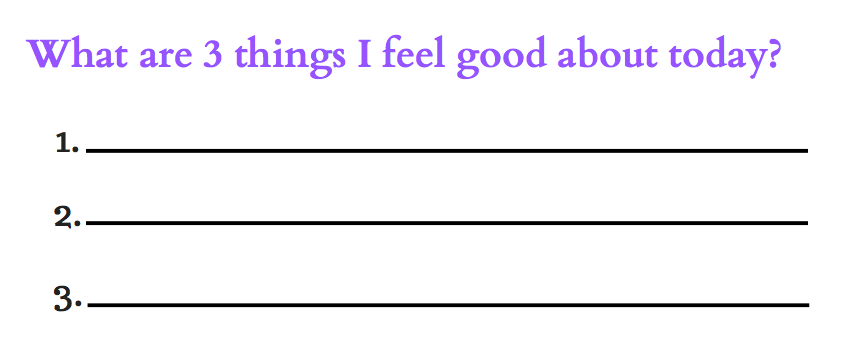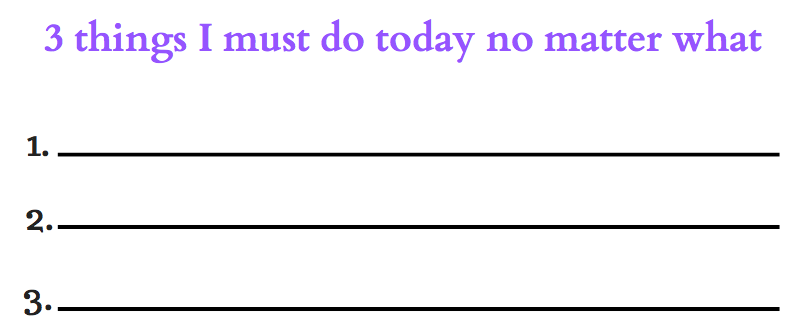Chapter 2
Getting Organised and Productive
Now that you know how much energy you have, let’s focus on how to use that energy to your advantage.
Lots of energy in lots of different places does so much less than lots of energy in one place at a time.
Let’s start by focusing on some key things to limit the time you spend on unnecessary decisions, and to increase the time you spend on stuff that will make you a rockstar in school with the least amount of effort possible.
If you should know anything about scientists and aspiring scientists like me, it’s that we love to work smart and get the most done in the most efficient way. It’s not just scientists, though; humans in general seek the path of least resistance (effort) to get things done. It is in fact the natural way for us.
When you work in alignment with your subject or whatever it is you’re focusing on, you won’t feel burned out; in fact, you might just feel inspired!
So keep in mind that, as you go through your work, your goal is to find a method of working that allows you to do the most with the least energy expenditure.
Now, I’ll give you some tips on:
- Dealing with math stress
- Dealing with general home or class work overload
For Math Stress
So, you’re having some trouble with math, otherwise known as math stress, whether it be because you’re getting low grades on test scores, or you’re just not understanding this alien language.
You’re struggling. That’s the bad news.
But here’s the good news: you can fix that by first adjusting your perspective a bit.
If you feel that whatever you do to get up, math just knocks you down, then read what’s coming next, because it might just be what you need to conquer this alien!
Subjects like social studies, language arts, or even science to some extent, are a bit… opinionated.
Whether the answer to one question is one thing or another can be debatable, and some bits can be misinterpreted or even manipulated.
But mathematics isn’t like that at all.
Math is based entirely on laws and principles.
Translation?
It doesn’t matter who you are, where you’re from; whether you’re a girl or a boy, Italian or American, an alien, a human being, or a piece of French Toast; whether you cry, shout, or laugh—math isn’t going to work any differently for you.
It doesn’t matter if you try to persuade your teacher to score your incorrect equation correct, or whether you’re the best or worst at math—math doesn’t lie, it can’t be cheated or bribed, and it certainly doesn’t change a principle for your temporary convenience.
That might seem even more stressful, but it’s actually very helpful, at least to me.
Knowing that the principles I use to solve an equation will not change, no matter what I say or do, brings me some degree of comfort because that means that math can never betray me unless I betray it.
In other words, if I am 100% sure that my answers are correct—I checked, double-checked, and triple-checked them to make sure they are in accordance with the principles—then I can be sure to get 100% on a quiz or test before I even get the results back, because I know for a fact that math won’t change while my teachers grade the assessment.
This is what happens when you work with math. But what happens when you don’t?
Well, you probably end up with the scenario I described earlier. If you’re unknowingly working against the principles of math, then it’s always going to knock you down when you try to get up—and there’s no way you’re going to absolutely ace math unless you learn to work with it.
So, first, before we start to get into all of the good stuff—the principles and such—really think about this perspective, and decide which side you want to be playing on.
You have come to a fork in the road…

I’m serious. With math, you’re either playing for the winning team or the losing team. And there’s no human judge to alter the game in any way.
Once I actually realised this, it made math so much easier for me because I really understood and got to choose how my relationship with math works.
Now, let’s learn all the productivity hacks!
For General Home or Class Work Overload:
The key question is: What am I going to study now?
If you have lots of homework, for many different subjects, where should you start? And what about when you have assignments that are due in 24 hrs or less?

In order to do well on them, you need to find a simple system that works for you. And you need to order your work in such a way that you create a workflow that makes you feel inspired to go through. A system that incorporates fun and the right amount of rest periods.
I usually start with math, take a restful break, then switch to language arts or social studies. Then I take another well deserved break and move into doing science. If there’s still more to do, I take a break and continue on until all the subjects are completed.
Why?
Mathematics and science are subjects that need a lot of attention. They are quite challenging, and are considered “heavy” because they require a lot of mental power. “Lighter” subjects, like language arts and social studies (which still require attention and concentration), aren’t as challenging—at least in my opinion. I find them to be like the cheese, tomato and prosciutto that I like to put in between my ciabatta bread.
I first start with math because the earlier I do it, the easier it is for me to be laser focused. I have tested this a lot and I’ve found that although I can do math anytime of the day or night (no joke, I can stay up ‘till 4 am for math), my concentration levels are heightened first thing in the morning.
So whenever I’m working on math projects or assignments, I will plan out my work and give it top priority. (It helps that it’s one of the subjects I most enjoy :).) Then I go easier with language arts or social studies, I move on with science as my last heavy subject, and then I finish my other subjects, if any.
The pattern is heavy-light-heavy-light. This keeps the balance of subject weight, and helps keep concentration in the game, preventing a brain shut-down.
But again, that’s just my way of doing it. Maybe you prefer doing all your “light” subjects first and your “heavy” subjects after, or the other way around.
Either way, take a few moments now to think about what your study pattern is going to be. And don’t worry. You can test them all out and then choose which one you prefer. You don’t have to choose one and stick with it for the rest of your life 🙂
Now that you know which you prefer, pick a specific subject to focus on first, whether it be algebra, physics, social studies, or grammar.
Once you’ve picked your pattern, you’ll find that a new question arises: How much time should you spend on each assignment?
That’s a really good question.
Remember I just alluded to the fact that I am always taking breaks in between my work?
I do that systematically and I use a technique that even grown-ups use—especially highly productive and successful professionals and business people.
I learned this technique from my mom. And it’s quite frankly one of the best things any kid can employ if they want to increase productivity and avoid brain fatigue.
It is known as the Pomodoro Technique.
What Is the Pomodoro Technique?
The Pomodoro Technique is something really useful that can help you keep track of your time, and make sure you have the right balance between studying and resting.
It’s a time management system that was developed by Francesco Cirillo in the 1980s, and it uses a timer to break down work into intervals of 25 minutes each, with a 5 and 10 min. alternating break in between.
Using this technique, you can set your pomodoro duration anywhere between 25 to 45 min., study the subject you picked out for that pomodoro, take a 5 min. break or 10 min. break (depending on the pomodoro number), and then come back feeling refreshed.
To help you with this, I prepared a Pomodoro Productivity Sheet just for you, which you can download and print out, and which you can use to set your pomodoros and your break time and keep track of what you’re studying. It will also help you manage how you feel and keep tabs on your energy levels.
I know a lot of tweens and teens who complain about always being really tired and mentally exhausted. Part of that might just be all the crazy changes taking place that even I am yet to fully understand. But some of it could just be that we need to create our own ways of managing the activities we engage in so that we can give our bodies and brains ample time to recover and reset.
The brain is a very fascinating and powerful organ. My mom is reading a book called Super Brain by Dr. Deepak Chopra and Rudolph Tanzi. Sometimes I like to take a sneak peak to see what insights they share about the brain. So far, I’ve discovered some crazy awesome facts—like the fact that your brain is plastic and it can never get full. So basically, there’s a lot that it can do for us, but we’ve got to learn how to manage it better if we want it to be a good worker. In short, what I’m saying is… There is a way for you to manage your work, your body, your energy levels, and your happiness levels. Something as simple as the tips I’m sharing here could be the start of your feeling less overwhelmed and drained by school.
In addition to the pomodoro section, I added 2 other sections, at the top and bottom of the 1-page sheet.

The first section asks the question “What are 3 things I feel good about today?”.
This is important, because by reflecting on the great things in your life today, you can give yourself a positive boost, which will help in your overall mood while you study.

The second additional section asks “3 things I must do today no matter what”.
This helps you prioritize things you need to get done today, in order to feel and be productive as well.
Here’s how I recommend you use the productivity sheet:
1. Write down 3 things you feel good about today
2. Set the subject you’re going to be studying for your first pomodoro (which you should have already decided in advance), the duration (how long it’s going to last in minutes), and the break time duration (for the first pomodoro, I recommend a 5 min. break)
3. Set a timer for your pomodoro duration. If you don’t have one, simply open a new tab on your computer browser, and type timer in your google search box; then set the duration, press start, and start studying
4. When the timer goes off, take your 5 minute break, in which time do anything else but what you studied
5. Repeat steps 2-3 for your second pomodoro, but when the pomodoro goes off, take a 10 minute break instead of 5
6. Repeat for your third pomodoro, taking a 5 min. break
Download your Productivity Sheet below!
Download your Productivity Sheet
Ready to increase your productivity, get on top of your schoolwork, and become a high-performing student?
If you practice the Pomodoro Technique every day for at least three to four weeks, you’ll see your productivity increase drastically.
I still use this technique, ever since I discovered it over a year ago. And it has done me wonders.
My hope is that with the tips I have given you, and this productivity sheet, you can be able to boost your productivity, and put all your energy in just the right place.
Chapter 3: SAWA
Learn what a Strength, Advantage, and Weakness Analysis is, how to do it, and how to assess where you are and where you need to go.
Ready To Master Math and Astrophysics The Simple Way?
Get started on your mastery or ask me a question!
